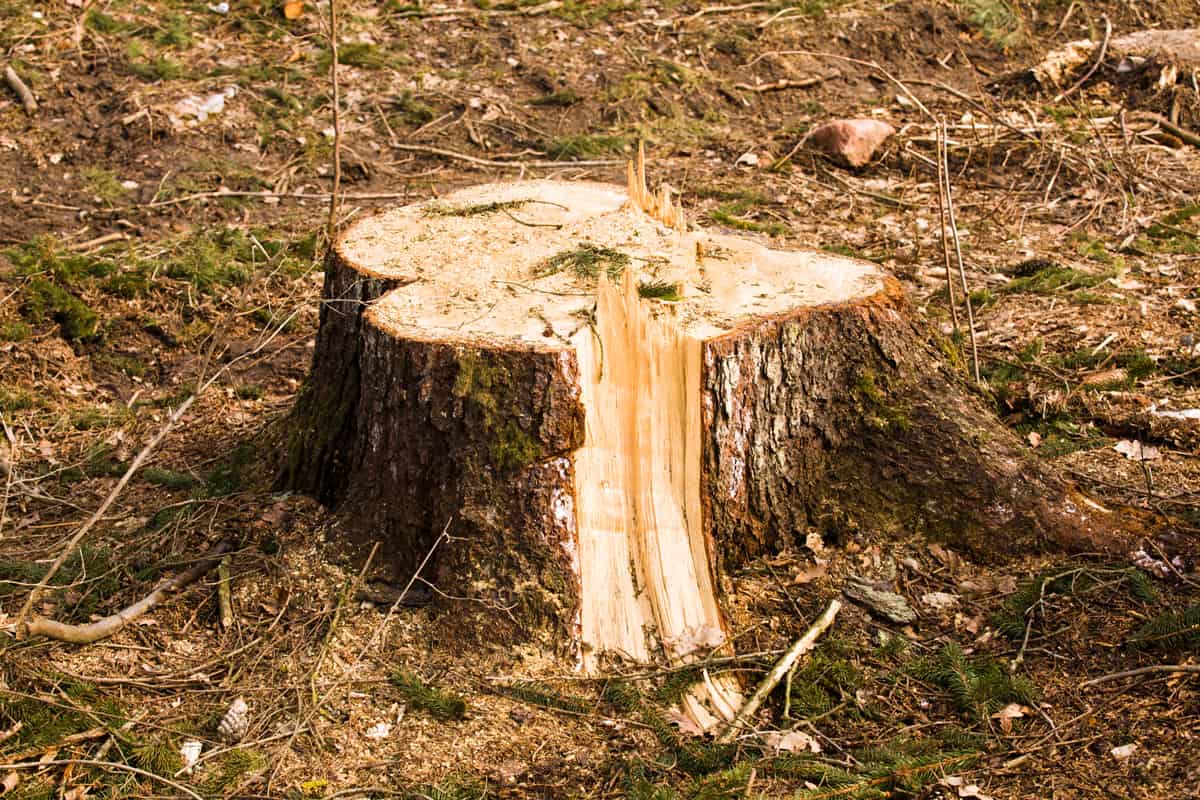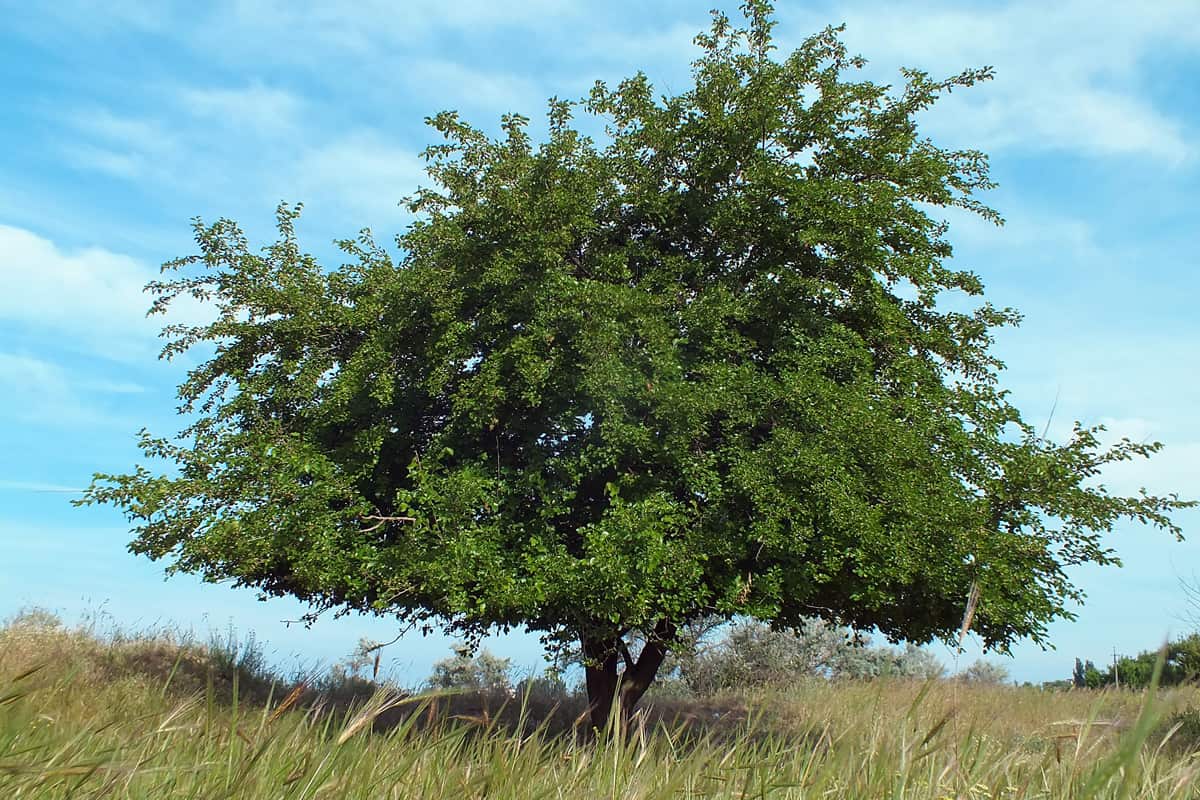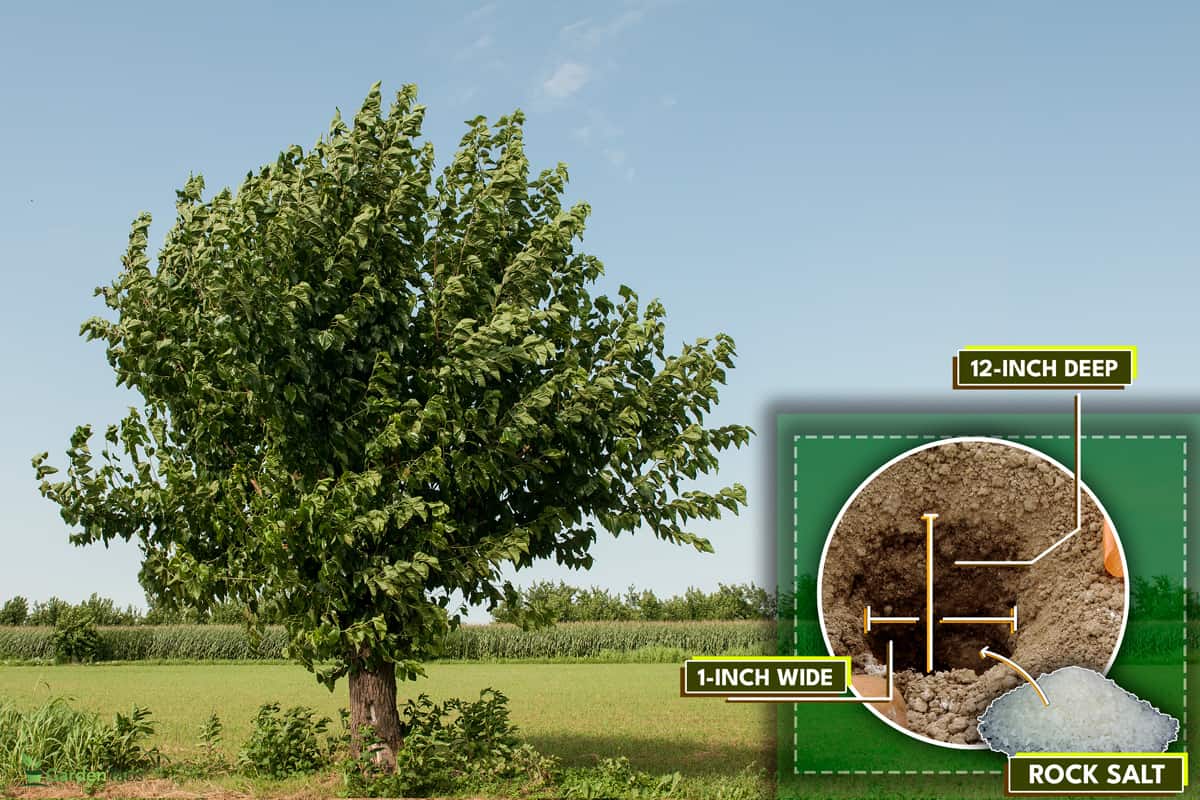You have attempted to eliminate the mulberry tree in your backyard. Unfortunately, it keeps growing back. You might be wondering what causes such and what to do. We did a lot of research to help you resolve the problem.
By its nature, the mulberry tree thrives wherever there's water. Due to this, the tree will keep growing back since the roots seep through and follow the water source.
To abort the re-growth of the mulberry tree, you need to kill the roots entirely. The alternative ways are chemical treatments and organic methods.
The mulberry tree grows vigorously in your backyard. Despite its tasty fruit and the nice shade and foliage, it could become a nuisance and wreak havoc. Learn more about the nature of this tree, why homeowners might want to remove it, and the methods to remove it. Keep reading!
Why Does The Mulberry Tree Keeps Growing Back?

With numerous attempts, you tried to remove the mulberry tree from your backyard. And later, you notice it keeps on growing back. Why does this happen?
Genetically, the roots of mulberry trees are invasive and thrive wherever there's water. They grow vigorously and follow the water source. They can squeeze and seep through even small cracks and openings in water pipes, sprinklers, and sewage systems.
The root growth follows toward the wet areas near the foundation due to the rain gutters and downspouts, thus penetrating the foundation of your home.

Another reason could be the significant amount of pollen easily spread by the wind, birds, and insects. When pollen falls to the ground, it anchors to the soil and proliferates in no time. Thus, despite regular pruning and cutting, it can be difficult to control the growth of mulberry trees.
How Do You Get Rid Of The Mulberry Tree?
If your mulberry tree worries you, especially if it has grown in an unlikely place, it can already be a nuisance since it keeps growing back. It's time to consider getting rid of it once and for all. Learning their innate characteristics, here are the ways to eliminate the mulberry tree.
Kill The Root System

It is best to kill the roots entirely. The whole tree should be cut down to the ground. This method should be planned since it involves a lot of labor and machinery. If the tree has grown immensely, some homeowners contract a tree removal company. Some will resort to renting heavy machinery and doing the task themselves.
If you wish to learn more about killing a tree, this post is worth reading: How To Remove A Laurel Stump And Roots.
Chemical Treatment
This method is cheaper than hiring a professional or renting machinery. This is best done anytime between May to September when the tree grows its full foliage. Here are the steps to follow:
- Use personal protective gear such as gloves, goggles, and a respirator since you will be handling chemicals. Wear chemical-resistant shoes or use plastic as shoes cover.
- With a shovel, dig out the saplings and roots. Use a chainsaw to cut branches and the trunk. Also, a ladder and pruning saw for high branches.
- Mix herbicide and water according to the product specifications. A concentrated and selective herbicide, such as glyphosate, is recommended. Brands such as Bayer and Roundup weed killer concentrates top the consumer reviews on this.
- Soak a paintbrush in the herbicide mixture and immediately apply it over the cut roots, stump surface, and cut surface of the branches. The chemicals get absorbed, thus killing the plant cells.
- If the stump is huge, use a sprayer to apply to ensure full surface coverage with the herbicide.
- Another way is to drill 3/4-inch deep holes close to the stump edges and pour the herbicide into the holes. This method is more effective than the former. The chemicals seep through and get fully absorbed, thus killing the stump.
Get hold of a pruning saw when you stretch out your limbs for high branches. With the ladder, you can conveniently cut branches way above your eye level. It is a razor-toothed, curved blade and D-handle design, which is ergonomic for easy operation. The teeth are heavy-duty stainless steel and multi-angled to maintain efficient cutting.
Check out this pruning saw on Amazon.
This Roundup herbicide sprayer could be very useful. The container is durable to handle herbicide chemicals. It has a 4-gallon capacity, enough to meet your spraying requirements. It has a wand with an ergonomic grip and shut-off lock to ensure continuous and consistent spraying over the stump surface.
Check out this herbicide sprayer on Amazon.

However, there are situations where cutting the mulberry tree isn't feasible. It could be that it has grown beside your fence or a fixed structure. The way to kill the tree is to use floral tubes filled with herbicide.
Get a small branch with no leaf, which should be as close to the main trunk as possible. Make a small cut to the branch and carefully place the tube over the end. Ensure that the herbicide isn't forced out of the tube. If you can't get a branch close to the trunk, you may need to work on two or three tubes on multiple branches.
Check out these floral tubes on Amazon.
The herbicide will begin working quickly, and you will notice that the tree is visibly dying in a few days. This method is beneficial to prevent overspray so that the outlying plants will not get affected by the sprayer. You can then trim the drying mulberry tree.
Lastly, there is one easy hack that you don’t need to cut down the tree or its small branches. You only need to do is " data-lasso-id="33907">squirting on the small branches. You will need a small hatchet and a spray bottle filled with 80% water and 20% herbicide.
With the hatchet, hit the branch to make a shallow cut on the surface. Immediately squirt the solution and ensure it seeps through the cut. You can make multiple cuts and squirts in one branch. You don’t need to reach high branches to make cuts.
Check out this hatchet on Amazon.
Here's a post about using chemical treatments that will be of further help. When To Apply Brush Killer [And How To]
Organic Methods
-=
If you don't want to use chemicals, you can utilize organic means. To replace herbicides, you can use weed killers such as white vinegar or rock salt instead.
Cut the tree down to the ground as in the previous methods. Then spray over the stump surface and leafy shoots with undiluted white vinegar. Make several applications during a warm and dry climate. The vinegar will dry quickly and be rapidly absorbed. The roots will eventually be killed.
Alternatively, you can use rock salt. Sodium chloride absorbs water, thus creating a drought effect. Toxic levels will build up as the roots absorb the salt, and the tree will eventually die.
To make this method effective, drill 12-inch deep by 1-inch wide holes into the stump and pack these with rock salt.

Other Techniques
Peel off the outermost skin of the stump until you reach the wet layer. This technique prevents the transport of water and nutrients to the upper portions of the tree. The tree will eventually die.
You can also stop the oxygen supply to the plant by covering the stump with dried leaves and soil.
Both chemical and organic methods are effective means of removing invasive mulberry trees. It takes regular and consistent treatment lasting more than a year to eliminate the mulberry tree in your backyard.
Why Should You Get Rid Of The Mulberry Tree?
At first, the fruit-bearing mulberry tree is a welcome sight in your yard because it proliferates and is adaptive to most soil types. However, these trees are destructive over time and create havoc on the environment. This sounds alarming, but yes, you realize it is deemed necessary to get rid of them.
Here are the probable reasons that you need to remove the mulberry tree:
It has shallow and invasive roots that grow above the ground. These roots create tripping hazards whenever you walk around the vicinity of the tree.
The shallow roots overgrow above ground and expansively in all directions, which is an unwelcome sight in your backyard.
The invasive growth of the roots can uproot and destroy your concrete driveways and sidewalks.
Since it rapidly proliferates wherever there's water, it can penetrate through your plumbing pipes, sewer, and sprinkler systems. This also includes the foundation of your house.
When fully grown, it grows chaotic and messy, with its dense branches and thick foliage that overgrows and expansively in all directions.
The tree absorbs water fast, thus depriving the surrounding plants. Even if you have only one mulberry tree, it can alter the beauty of well-maintained lawns.
The male species produces a sizeable volume of pollen that can pose a health hazard. People who have an allergy will likely suffer since pollens are strong irritants. For this reason, it is already banned in some cities.
Wrap Up
Mulberry trees are easy to grow. With their invasive roots, they easily thrive in your backyard wherever there's water. When you don't give them regular trimming and pruning, they will grow uncontrollably and can be a nuisance and wreak havoc.
When your mulberry tree gives you more problems than its sweet fruit and huge shadow, it's time to eliminate the tree once and for all. You must kill the roots entirely to ensure they won't grow back. Alternative methods to kill your mulberry tree are chemical treatment and organic means.
Before you go, you might be interested in checking out these posts for related topics:
Why Is My Mulberry Tree Dying?
Do Tea Trees Have Invasive Roots?




